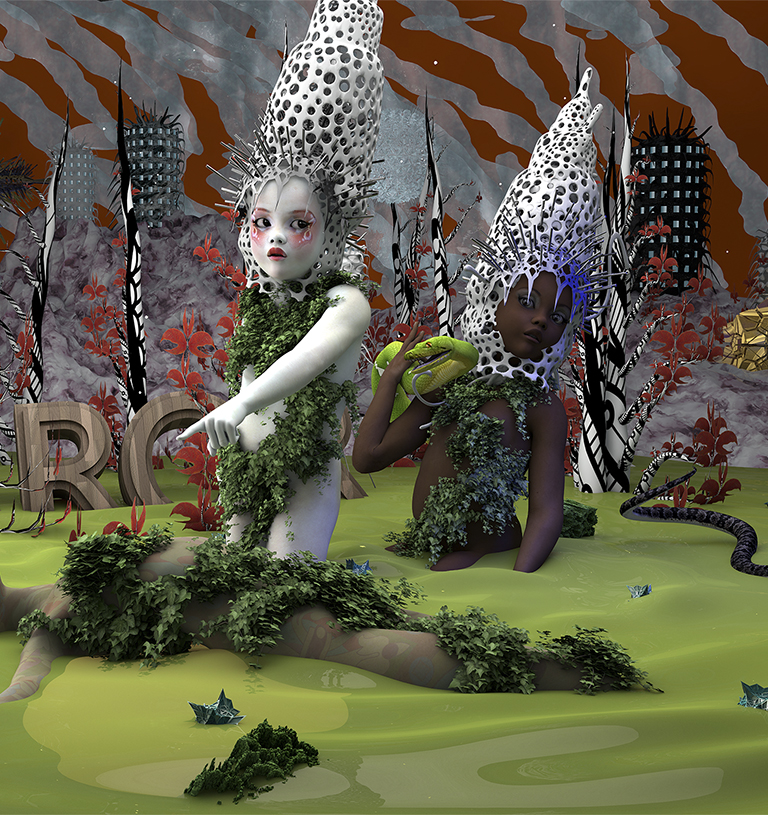Participating Artists and Scientist Teams
- Jeffrey Wolin (Photography)/Andrew Lumsdaine (informatics and Computing)
- James Nakagawa (Photography)/Michael Hamburger (Geology)
- Arthur Liou (Video/Media)/Jim Powers (Biology)/Alex Straiker (Psychology)
- Margaret Dolinsky (Video/Media)/Roger Hangarter (Biology)
- Rowland Ricketts (Textiles)/Roger Hangarter (Biology)/Jim Powers (Biology)
- Caleb Weintraub (Painting/Installation)/Jim Powers (Biology)
The Grunwald Gallery of Art is pleased to present “Imag(in)ing Science”, an exhibit and series of events based on collaborative projects by artist and scientist teams from Indiana University. The exhibit will open to the public with a panel discussion on Friday, August 30, from 5:00-6:00pm in the Grunwald Gallery. The panel discussion will feature several of the artist/scientist teams and the discussion will center on the theme of collaboration and a general overall investigation into the creative nature of the visual arts and its similarities and differences to scientific exploration. This event will be followed by an opening reception from 6:00-8:00pm.
The exhibit will feature new creative work by several artist/scientist teams consisting of faculty from the School of Fine Arts and the departments of Biology, Geology, Medical Sciences, Psychology and Brain Sciences and Informatics at Indiana University. Each team will present a collaborative work that has its origins in scientific images, recordings or imaging techniques. These images are generated from a variety of sources including the Light Microscopy Imaging Center at Indiana University, seismographic recordings of the tsunami in Japan, and new images created by plenoptic cameras.
A lecture by Felice Frankel, Research Scientist, MIT/Center for Materials Science and Engineering, will be held on Tuesday, September 10 at 5pm. Finally, a catalog documenting the projects will be produced and distributed for sale online and at the Friends of Art Bookshop.
This exhibit and programs will explore the relationship between creative production in the arts and sciences and the interactivity of collaboration. The projects will utilize scientific images as a springboard to introduce creative concepts and non-traditional thinking into the production of visual materials that will highlight and illustrate ideas found in science. The visual arts and sciences have a shared history of creativity and parallel paths of experimentation, goal seeking, and trial and error. The interconnectedness of these thought and work processes will be highlighted, and the similarities and differences in the thought processes within these disciplines will be explored.
The theme of artist/scientist collaboration is pervasive in the contemporary art world, and has reflected a general overall interest in the creative nature of the visual arts and its similarities and differences in scientific exploration. The collaboration within these artist/scientist teams will produce projects that incorporate not only significantly different kinds of creative thinking, but may introduce new ways to illustrate scientific ideas and processes.
This exhibit and corresponding programs were made possible by The College Arts and Humanities Institute, The Center for Integrative Photographic Studies and The Department of Geological Sciences at Indiana University. In addition, Imag(in)ing Science is part of the College of Arts and Sciences’ semester-long initiative, “Themester 2013: Connectedness: Networks in a Complex World.”


